|
"[After breakfast] we would turn over the boys to the park operation at eight o'clock…Our park superintendent in charge of the workforce was a gentleman by the name of Frank Rozelle, who'd been here for a long time and was an excellent, excellent foreman….Our duty, of course, was to turn the boys over…So we had no responsibility as far as the work. But we did pay them." Daily Routine

Camp life in the Civilian Conservation Corps came with structure and well-defined schedules. The men would be woken up with reveille by army camp personnel at 6 a.m. They would then prepare for the day by showering, engaging in calisthenics, and eating breakfast. At 8 a.m., the CCC enrollees would be handed over to NPS rangers, who supervised their work. Work would last until 5 p.m., with a break for lunch from noon to 1 p.m. Dinner would be served at 6 p.m. and the men would have leisure time until lights out at 10 p.m. In the evenings, Monday through Friday, educational classes and sporting events were offered. The men were given the weekends off to spend as they pleased. This schedule helped the CCC men learn discipline and maintained order within the camps. 
Right image, ZION 12659: After work was done for the day, the CCC men used their evenings to relax and spend as they pleased. This photo shows some men reading and conversing outside a camp building. 
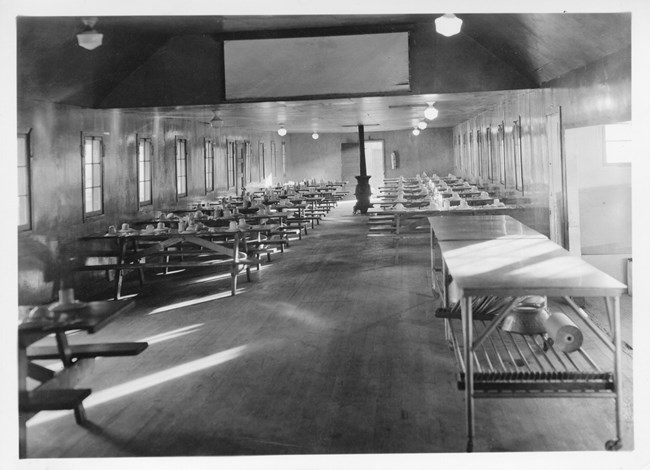
FoodFood was one of the centerpieces of camp life in the CCC. The Great Depression caused numerous problems for the young men of the nation and, prior to enrollment, many of the young men had struggled to make ends meet. It was common for them to join weak and undernourished due to conditions of the times, which included a lack of food, little exercise, limited access to health services, and many felt the weakening effects of mental fatigue and stress from continuous unemployment. At the start of the CCC in 1933, the average length of unemployment was seven months, and the national unemployment rate was 25%. 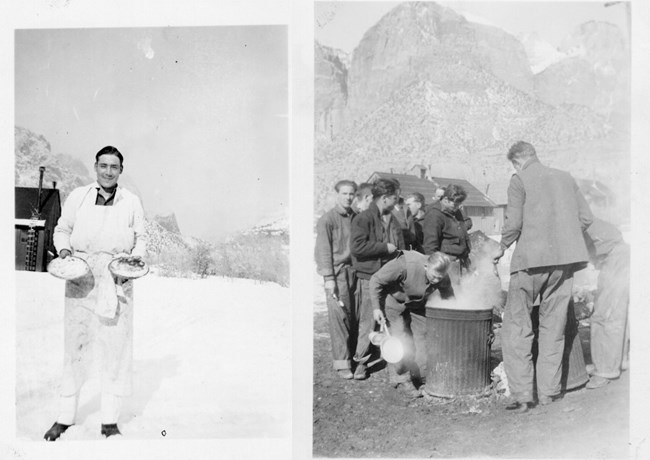
Right image, ZION 12653: Each man took turns on kitchen patrol duty to assist the cooks in the kitchen. They were all responsible for cleaning up after themselves and washing their dishes. These men are waiting in line to scrub their plates and utensils. In CCC camps, men received three square meals a day. Breakfast and dinner were served in the mess hall, while lunch was either served in the mess hall or packed and taken to work sites, depending on project distance. Common meals included eggs for breakfast, sandwiches for lunch, and meat and vegetables for dinner. Because of better nutrition and exercise, men commonly gained an average of 12 lbs. within the first two months at camp. 

ZION 7094: This Thanksgiving menu was created by the enrollees of Bridge Mountain Camp in 1940. It gives insight into the types of food the men would eat on holidays, such as classic Thanksgiving courses of turkey and potatoes. It also represents the tensions and prejudice of the time through imagery. The drawing on the cover of of this menu shows a Japanese man being imprisoned by an enormous turkey. Created a year before the United States entered World War II, derogatory images such as this were created because of fear and animosity. These feelings arose in response to reports of international conflicts like the Second Sino-Japanese War. 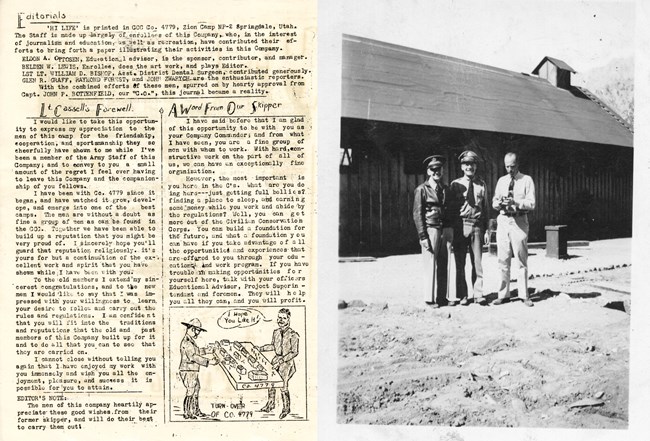
Left image, ZION 11986: Many CCC companies established their own camp newspapers. Not only did this provide a way to share information, but it allowed men to practice their writing and communication skills. EducationThe CCC incorporated both formal classroom education and informal on the job training to improve the men’s work performance and understanding of conservation. Although the education program had existed since 1933, the legislation that formally changed the name of the program from the Emergency Conservation Work to the Civilian Conservation Corps in 1937 also required 10 hours of educational or vocational courses to be offered each week. 
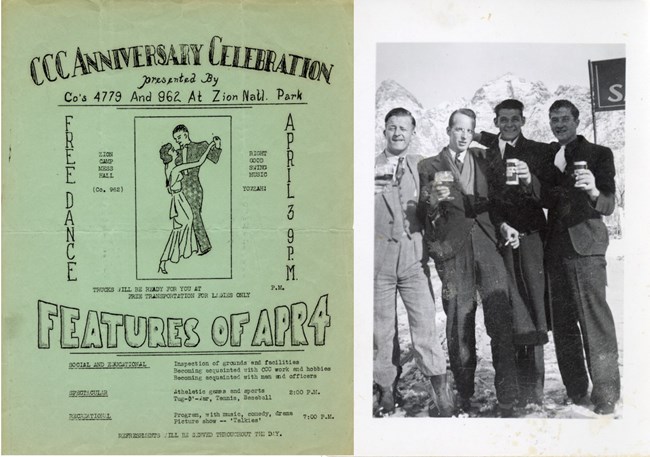
Right image, ZION 12005: Enrollees would use their free time to explore the area, including the amenities of nearby towns. Here is an image of four CCC men who took advantage of their weekend passes to enjoy a beer in Springdale. LeisureDuring their free time, the men had several choices for recreation and entertainment activities. One of the more popular weekend activities was attending dances. The camp truck nicknamed the “pie-wagon,” would often pick up supplies in town during the week and carry CCC members into Hurricane or St. George on the weekends for dances or other social events. On occasion, the camp would host its own dances and would send out invitations to local young women which advertised music performed by enrollees. 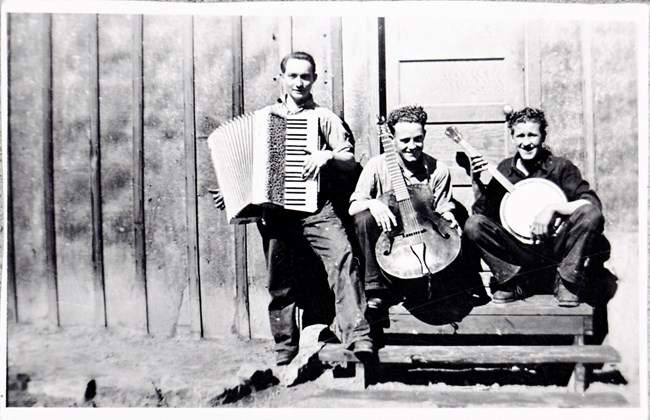
In order for the men to be away from camp for the weekend, leave passes had to be approved by camp leadership. The CCC men were not allowed to have cars (although some men hid their cars in Springdale), so it was common for them to hitchhike into nearby towns to catch the train if they had a pass. |
Last updated: October 6, 2021
